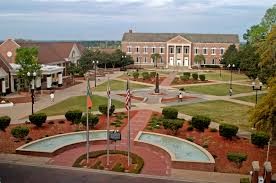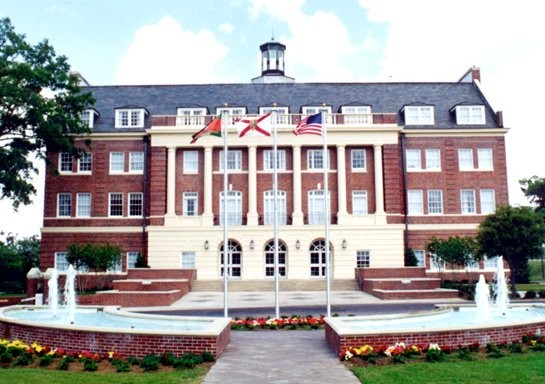Lee Hall, Florida Agricultural and Mechanical University
Introduction
Text-to-speech Audio
Images
FAMU's Campus Today

Lee Hall

Backstory and Context
Text-to-speech Audio
In 1905, the school made the switch to a Board of Control which allowed the school to give out official degrees of higher education. Along with the leadership change, the school changed its name once again in 1909 to Florida Agricultural and Mechanical College for Negroes. Enrollment reached 317 students, but issues arose when a fire destroyed a majority of the school. A generous gift of $10,000 was given by Andrew Carnegie for a new library to be built on the Black land-granted campus. The new president of that time, Nathan B. Young transitioned the school into a four-year degree program offering education in science, economics, agriculture, and mechanical arts.
The next president, John Robert Edward Lee, Sr, designated much of the physical campus back in the 1920s and 30s which is still here today. The college has been accredited since 1935 by the Southern Associations of Colleges and Schools. The school continued to grow throughout the years, and the 50s and 60s brought more recognition to the school than ever. With segregation laws also affecting the city of Tallahassee where the school was located, students began boycotts and sit-ins demanding equality for all. The school also dropped the racial connotation from its name and became Florida Agricultural and Mechanical University.
The school offers 56 bachelor's degrees, 29 master's degrees, two professional degrees, and 12 doctoral degree programs. The school is most notable for its Pharmaceutical and Law programs. FAMU hosts the largest football game between any Historically Black College/University with Bethune Cookman University. Even though the school ranks in the upper six hundred on Forbes University rankings list, it is still a college rich in culture and heritage. The school now hosts over 11,000 students and 700 faculty members as the #1 ranked HBCU in the nation in research and development.
Sources
1. "History of Florida Agricultural and Mechanical University (FAMU)." Florida Agricultural and Mechanical University. Accessed September 19, 2016. http://www.famu.edu/index.cfm?AboutFAMU&History
2. Pitzer, Robert. "Florida A&M University [Tallahassee] (1887- )." BlackPast.org. Accessed September 19, 2016. http://www.Blackpast.org/aah/florida-m-university-1887.
3. "History & Tradition of the Florida Classic." Florida Classic. Accessed September 19, 2016. http://www.floridaclassic.org/history.
4. "FAMU History." Accessed September 19, 2016. http://famu.digital.flvc.org/islandora/object/famu:history.
5. "FAMU Way Historical Survey." City of Tallahassee. Accessed September 19, 2016. https://www.talgov.com/Uploads/Public/Documents/famuway/FamuWay-HistoricalSurvey.pdf.
